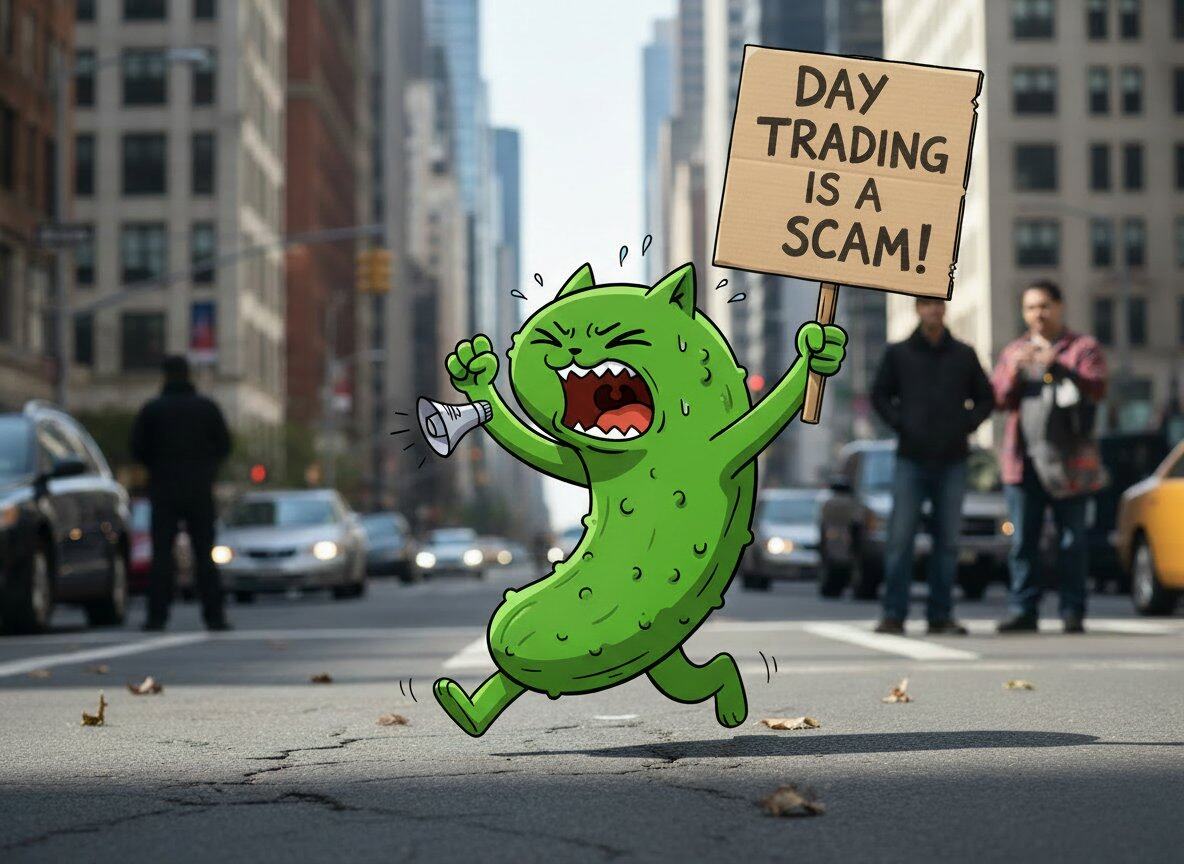From the spotlight to the edge: The bubble burst of 8 star VC-backed projects
- 核心观点:明星项目暴跌揭示行业深层问题。
- 关键要素:
- ICP估值泡沫破灭跌99.5%。
- Fuel生态未落地价格跌94%。
- Yield因需求不足主动关闭。
- 市场影响:警示过度依赖融资与炒作风险。
- 时效性标注:长期影响。
Original author: Biteye core contributor Viee
Original editor: Biteye core contributor Denise
In the crypto industry, every bull market produces countless "high-profile projects": enthusiastically pursued by leading VCs, listed on major exchanges, and attracting countless retail investors. However, time is the sharpest touchstone. Since their peak, the prices of some projects have fallen by 90% or even 99% or more, and discussion of these projects has steadily declined.
This article reviews eight projects funded by star VCs and once held high hopes during the bull market. From ICP to DYM, we'll analyze their financing backgrounds, market capitalization trends, and the underlying reasons for their declines—was it an unsustainable model? A delayed ecosystem launch? Or perhaps too many competitors or insufficient market demand?
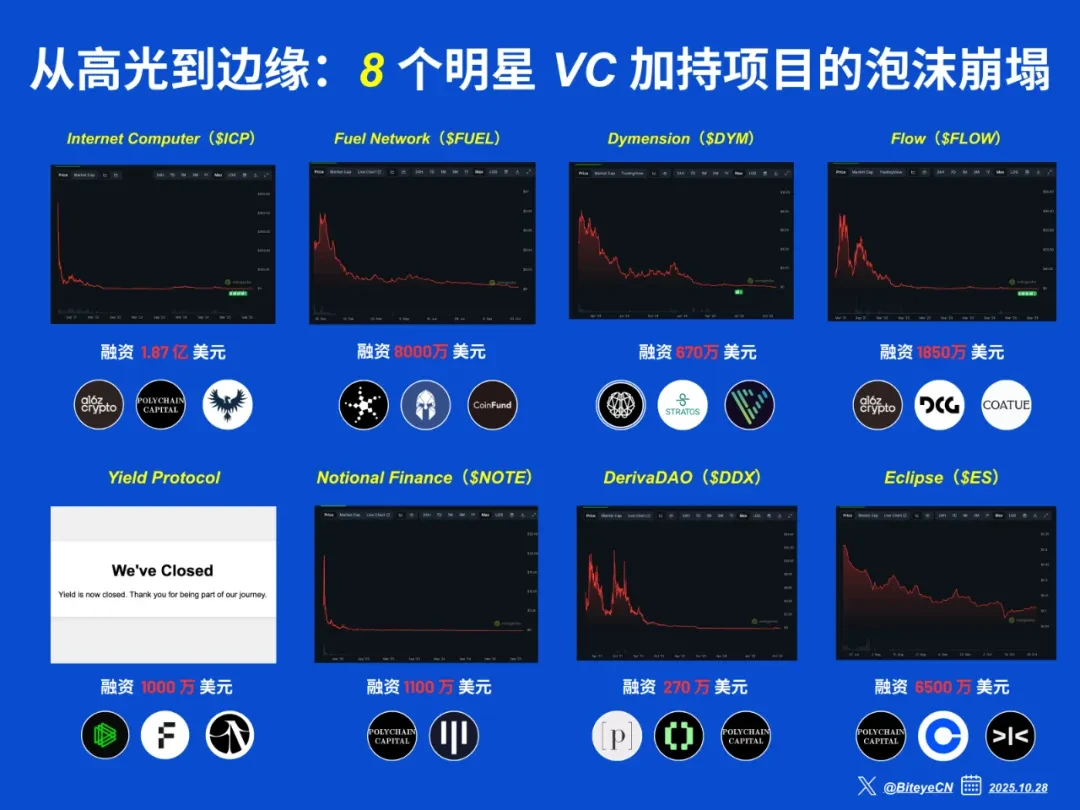
01 Internet Computer ($ICP)
Once ranked in the top five, now it has fallen by 99.5%
Internet Computer (ICP), launched by the Dfinity Foundation, is positioned as a decentralized "Internet Computer," aiming to enable smart contracts to natively run various internet services. Development of the project began in 2018, and it launched in May 2021 at the height of the bull market. It entered the top five cryptocurrencies by market capitalization on its first day, attracting significant market attention.
ICP is backed by top Silicon Valley venture capital firms, including a16z, Polychain Capital, Multicoin, and CoinFund, raising a total of $187 million. ICP's initial price reached several hundred dollars, peaking at nearly $700. However, it quickly fell after its launch, falling below $20 within two months. By 2025, ICP had been hovering around $3, a drop of over 99% from its peak.
The main reasons for project failure include valuation bubbles, hasty launches, insufficient initial liquidity, and external doubts about project governance and centralization. Furthermore, the ecosystem has been slow to develop and has failed to deliver on its early promise of "reshaping the internet."
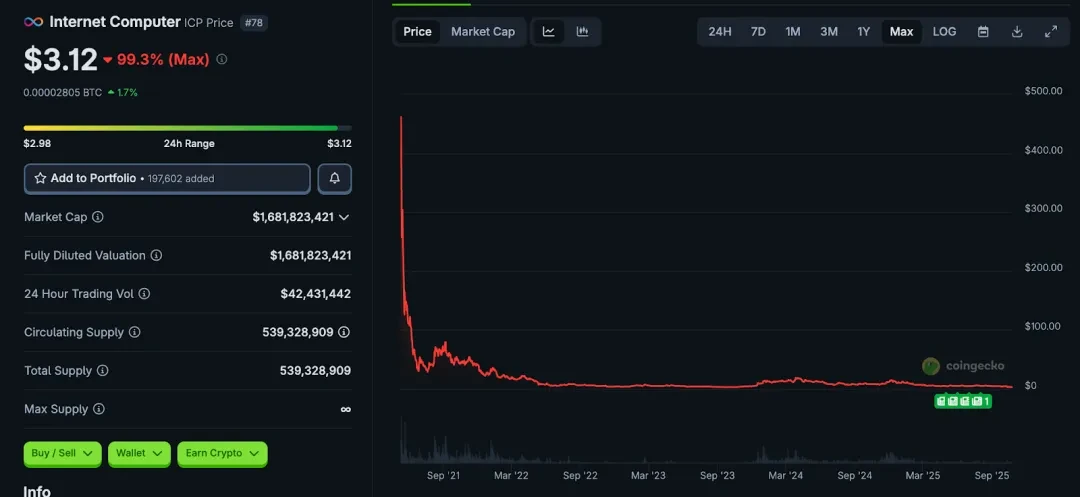
Fuel Network ($FUEL)
The ambition of a modular execution layer has yet to be realized
Fuel Network is a second-layer solution for Ethereum expansion. Its core goal is to separate the execution layer from consensus and data availability, thereby increasing throughput and reducing costs.
The project is backed by institutions including Blockchain Capital, The Spartan Group, and CoinFund, and is said to have received at least $80 million in strategic financing.
However, the Fuel Network has failed to meet expectations in terms of token performance and ecosystem adoption. FUEL currently trades at approximately $0.003, with a market capitalization of only tens of millions of dollars, a decline of over 94% from its peak. With the continuous emergence of Ethereum scaling, various Layer 2 (L2) and modular chain solutions, it remains questionable whether Fuel's differentiated advantages can be maintained in the long term.
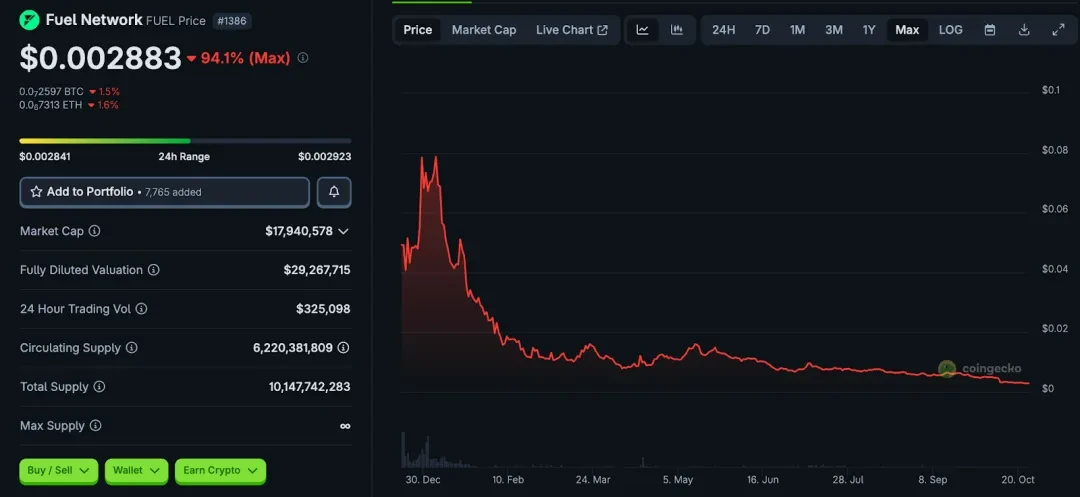
03 Dymension ($DYM)
RollApps' new attempt at architecture saw its price drop by over 97%.
Dymension is a project focused on "modular blockchain" infrastructure, featuring an L1 network that allows developers to quickly deploy application-specific blockchains ("RollApps"). Its design decouples the consensus and settlement layers and optimizes scalability and customization by building RollApps within the ecosystem.
The project launched in 2022 and launched its DYM token in early 2024. Despite its clear technical positioning and backing from multiple investors, including Big Brain Holdings, Stratos, and Cogitent Ventures, DYM's current price has plummeted by over 97% from its peak. Data shows that its historical high was near $8.50, and its current price is around $0.10. While the project is still operational, its ecosystem development is slow, and community and user engagement has fallen short of expectations.
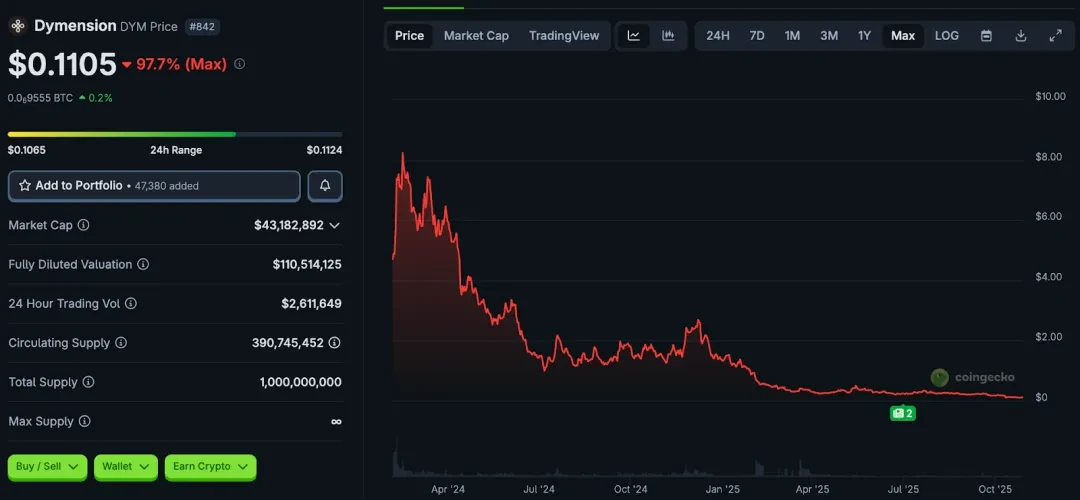
04 Flow ($FLOW)
The once popular NFT chain has now lost its popularity
Flow is a high-performance public blockchain launched by Dapper Labs, focusing on NFT and gaming applications. In October 2020, the FLOW token was launched on CoinList. Riding on the NFT craze of 2021, the ecosystem flourished.
Dapper Labs has a strong backing. Between 2018 and 2021, it received multiple rounds of investment from institutions such as a16z, DCG, and Coatue, totaling over $18.5 million. The price of FLOW reached an all-time high of approximately $42 in April 2021, then continued to decline as the market retreated. By 2025, the price had fallen to $0.28, a drop of over 96% from its peak, and its market capitalization had shrunk significantly.
Flow's decline is closely related to the cooling of the NFT market. The ecosystem relies on a single hit app, lacking sustained growth momentum and, in the long term, lacking user retention and real demand support.
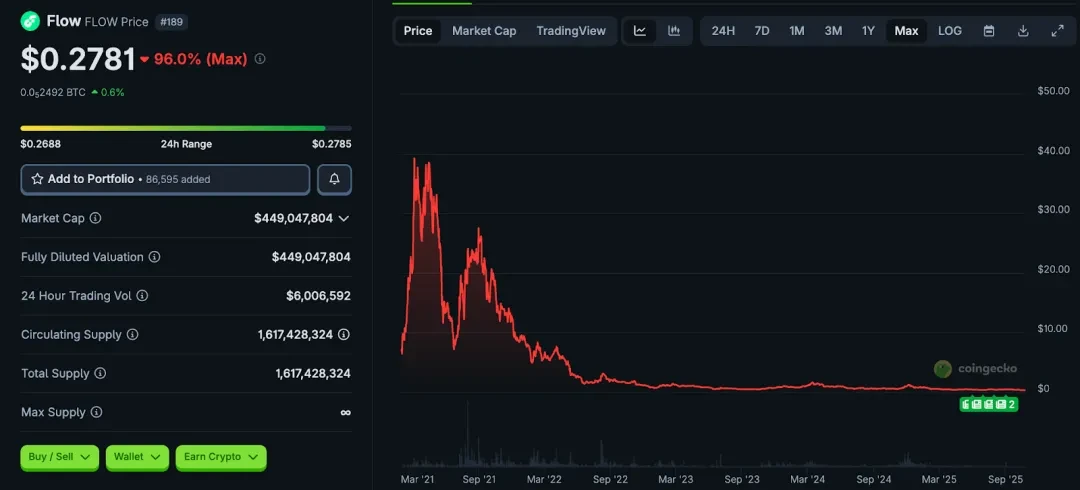
05 Yield Protocol
Paradigm-backed fixed-rate agreement, closing in 2023
Yield Protocol is an Ethereum-based lending protocol that focuses on fixed-term, fixed-rate lending, utilizing the issuance of fyTokens to implement bonded lending products. Launched in 2019, the project was once considered one of the pioneers in the DeFi fixed-income space.
In June 2021, Yield completed a US$10 million Series A financing round led by Paradigm, with participation from well-known institutions such as Framework Ventures and CMS Holdings.
However, in October 2023, Yield Protocol officially announced the closure of the protocol, and the official website was immediately taken offline.
The core reason for the project's failure was insufficient demand for fixed-rate lending, making it difficult to maintain an efficient market. Furthermore, amidst the overall downturn in the DeFi market and increasing regulatory pressure, Yield was unable to develop a sustainable product model and ultimately chose to voluntarily cease operations, becoming one of the few star VC-backed projects to officially close in recent years.
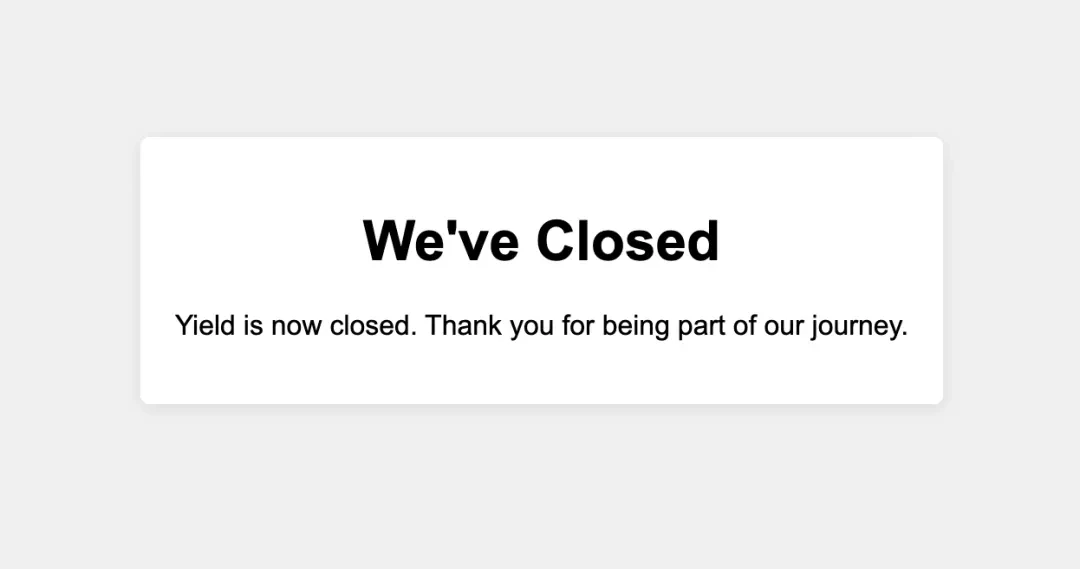
06 Notional Finance ($NOTE)
Fixed-rate lending agreements are gradually becoming marginalized
Notional Finance is a fixed-rate lending protocol deployed on Ethereum that supports users to borrow USDC, DAI, ETH, WBTC and other assets for a fixed period, attempting to fill the gap in "stable income" products in the DeFi market.
In May 2021, Notional completed its Series A financing round led by Coinbase Ventures. Investors also included first-tier institutions such as Polychain Capital and Pantera Capital, with total financing exceeding US$11 million.
As of 2025, the market value of NOTE tokens was only about 1.66 million US dollars, down more than 99% from its peak, with daily trading volume less than 1,000 yuan, and low community activity and protocol update frequency.
Notional faced similar core challenges to Yield Protocol: fixed-rate products faced limited user acceptance in the DeFi market and lacked sufficient liquidity. Furthermore, its design differed significantly from mainstream lending protocols, leading to a low user willingness to migrate and ultimately marginalization.
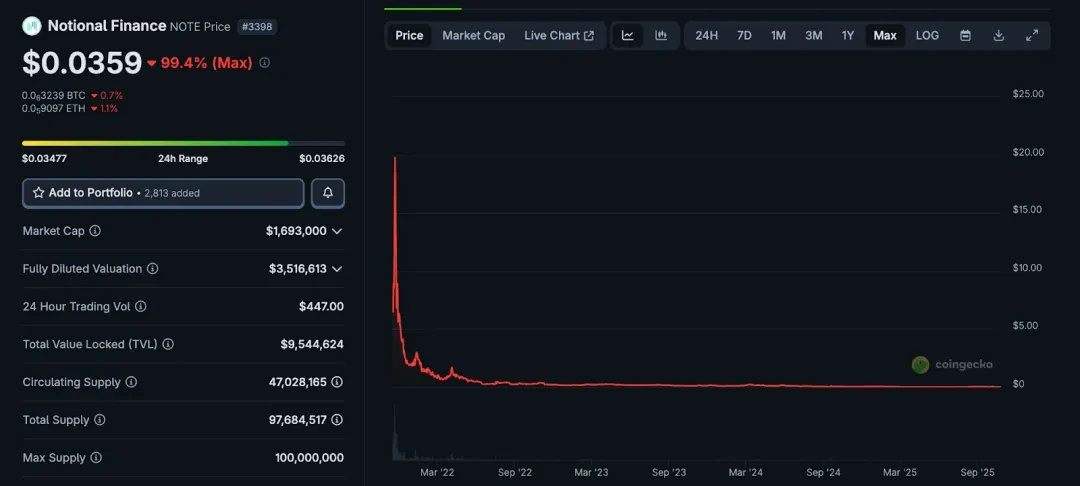
DerivaDAO ($DDX)
From star derivatives DEX to marginal withdrawal
DerivaDAO is a decentralized perpetual contract exchange project, first proposed in 2020. It is positioned as a derivatives platform that combines the operational experience of a CEX with the security of a DEX. The project emphasizes community governance and seeks to replace centralized operations with a DAO.
In July 2020, DerivaDAO secured investments from leading VCs including Polychain, Coinbase Ventures, and Dragonfly, raising a total of $2.7 million. While relatively small, its roster was considered stellar. After its 2021 launch, the price of DDX reached approximately $15, but quickly declined. By 2025, DDX had been hovering between $0.01 and $0.04, a drop of over 99% from its peak, bringing the project's market capitalization to near zero.
Due to the delayed product launch and lack of competitive features, coupled with the aggressive mining incentive mechanism in the early stages, which led to the rapid release of tokens without actual trading demand, DerivaDAO also faced strong competitors such as DYDX, making it difficult for the platform to break through.
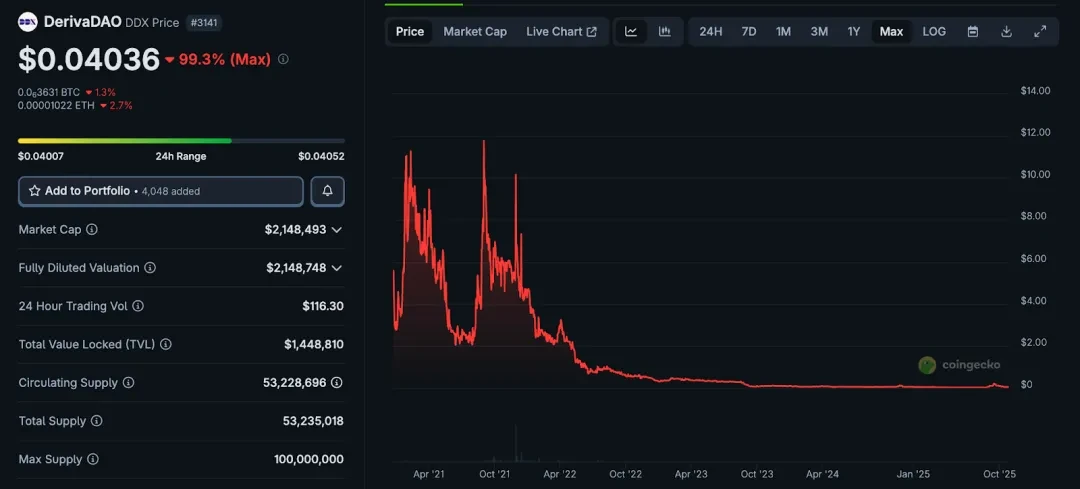
08 Eclipse ($ES)
The new generation of L2 infrastructure was tested, with a drawdown of over 64%.
Eclipse is a Layer 2 solution that combines the security of Ethereum with the high performance of Solana. The project plans to launch its mainnet in 2024 and its ES token in July 2025.
The project has received investment from well-known venture capital firms including Placeholder, Hack VC, and Polychain Capital, with a financing scale of approximately US$65 million.
However, judging by market performance, the ES token's valuation has already experienced a significant pullback. According to Coingecko data, while ES is still trading, it has plummeted approximately 64% from its peak. The Eclipse ecosystem is still in its early stages, with fierce competition for roll-up or modular chain solutions. With multiple projects vying for a spot in the L2 market, the path to market success for these projects remains unclear.
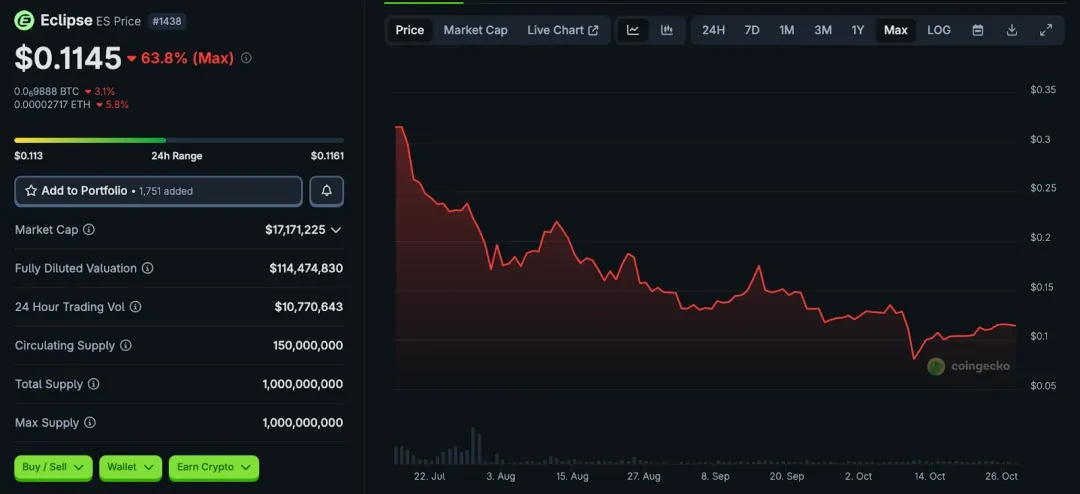
09 Conclusion
This article is not intended to criticize or create emotions, but to calmly review the "plunge samples" in the previous round of boom before the next cycle arrives.
They once boasted the most dazzling capital, narratives, and communities—yet still couldn't escape decoupling, collapse, stalling, and marginalization. In a market where finance and technology are highly intertwined, relying solely on financing, token prices, and buzz isn't enough. Is the business model viable? Can users be retained? Can the product continue to advance? These are the core variables that truly determine a project's fate.
These stories also remind us not to just look at venture capital platforms and short-term surges, but also to learn to identify whether the long-term structure is valid.
When the tide recedes, what remains is the real value.


